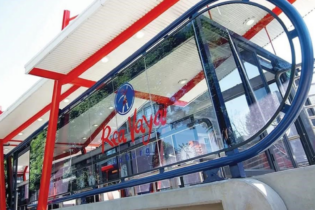The use of intelligent predictive maintenance platforms for organisations in the transportation sector can unleash powerful business advantages.
Case studies show that the use of predictive maintenance platforms can reduce costs by up to 30%, increase productivity by 25% and lower downtime due to outages by up to 45%. Predictive maintenance platforms rely on sensors that monitor the performance of a particular component or piece of equipment. For example, on a passenger train there may be sensors monitoring the speed of the carriage, the performance of the wheels, or the delivery of electricity via the overhead power supply. In the classical (reactive) scenario, this data is fed into a database, which is then surfaced via an analytics platform, and packaged into consumable reports – to produce meaningful actions. However, predictive maintenance solutions take this a step further. They combine the data with other information (such as weather patterns or traffic congestion patterns) and build a complete picture of when a component starts to under-perform, or to breakdown, for example. This information can be used to create a strong indication of when a similar problem is likely to re-occur. As the age-old adage confirms: ‘forewarned is forearmed’. We can describe maintenance approaches on a spectrum, showing five levels of maturity: Reactive: waiting for something to break before it is fixed. This approach comes with the obvious drawbacks of high costs and a strong likelihood of downtime. Preventative: routine checkups and scheduled replacements (for example, a fleet operator may check all the vehicle engines in its fleet). Predictive/condition-based: refining the preventative approach (for example, checking all the engines that are over two years old).Proactive: as you gather historical data and gain intelligence, you can start predicting the circumstances under which equipment may fail.
Reliability-driven: this is a fully optimised state, the ‘holy grail’ of predictive maintenance, where the processes are in place to prevent the causes of equipment failure as far as possible, and, therefore, minimise the need for on-going maintenance. Transforming data into knowledge Collecting the data is often the simple part. Where the real work begins is in building the analytics layer that deals with the so-called ‘four Vs’ of data: Volume, Velocity, Variety, and Veracity (authenticity). Producing actionable insights requires the organisation to record the historical information – that under certain conditions (a certain gradient, or temperature, or loading factor, for example) a piece of equipment is liable to fail – and then using it to alert the team that similar conditions are about to occur. This is a prime example of transforming data into knowledge. Phrased more colloquially, progressing through the above-mentioned spectrum means moving from a state of understanding what happened, to why it happened, to knowing when it will happen again, to preventing it from happening at all. Therefore, in what ways do transportation companies derive benefits from having the foresight to know when certain components, equipment or vehicles will under-perform? By preventing failures or breakdowns, uptime is increased, the risks of contractual penalties associated with downtime are reduced, customer satisfaction is improved, and brand reputation is enhanced. Because it is now more targeted and condition-based, the actual process of maintenance becomes less costly. The good news is that it does not necessarily require a multi-year, hugely complex and costly exercise to get started. Predictive maintenance platforms delivered as a dynamic, virtual service can be introduced rapidly with minimal upfront costs. They also benefit from being highly scalable, centrally managed, and continually enhanced to capitalise on the latest advancements in data science. Source: Bizcommunity







